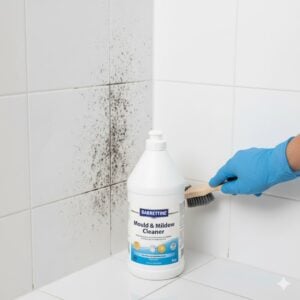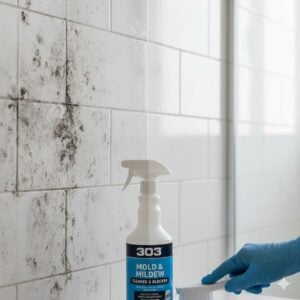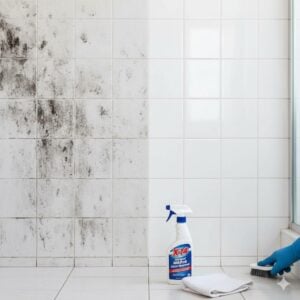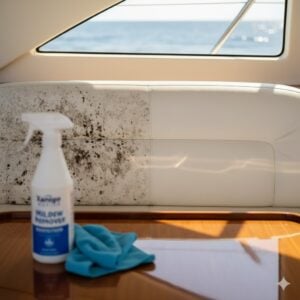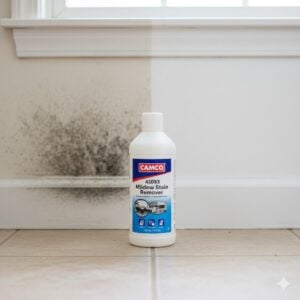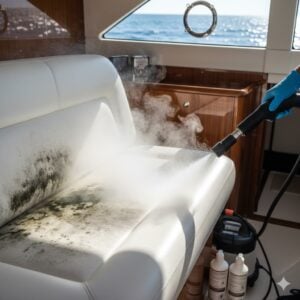Understanding the intricacies of professional mold removal is crucial for maintaining a healthy living environment, especially in areas prone to humidity and dampness. “4 Professional Mold Removal Secrets You Can’t Afford to Miss” delves into the essential techniques and strategies used by experts to effectively combat mold. This guide aims to enlighten homeowners about the advanced methodologies, safety protocols, and preventive measures integral to professional mold remediation. Grasping these concepts not only aids in tackling current mold issues but also equips you with knowledge to prevent future occurrences, ensuring your home remains a safe and comfortable haven.
[lwptoc]
Table of Contents
Toggle1. Advanced Mold Detection and Assessment Techniques
The foundation of effective professional mold removal lies in advanced mold detection and assessment techniques. These sophisticated processes are crucial for accurately identifying the extent and severity of mold infestation, which in turn informs the remediation strategy. Here’s an in-depth look at the methods used by professionals:
Understanding the Environment for Mold Growth: Mold thrives in damp, dark, and poorly ventilated spaces. Professionals begin with a thorough understanding of these conditions to pinpoint potential mold hotspots, including hidden areas like behind walls or under floors where mold often goes unnoticed.
Visual Inspection: The initial step involves a detailed visual inspection. Experts look for visible mold, water damage, and signs of high moisture. This inspection helps map the affected areas and assess the severity of the infestation.
Moisture Detection Tools: Tools like moisture meters and hygrometers are employed to measure the moisture content in various materials and humidity levels in the air. Elevated moisture levels in walls or ceilings often indicate a high likelihood of mold growth. Identifying these areas is critical for focused remediation efforts.
Infrared Thermal Imaging: Infrared cameras are utilized to detect cooler, damp areas behind surfaces – potential breeding grounds for mold. This non-destructive technique is invaluable for finding hidden mold, avoiding unnecessary damage to property during inspection.
Air Sampling Techniques: Air sampling involves collecting air from the affected and unaffected areas of a home and analyzing it for mold spore concentration. This helps assess the indoor air quality and the spread of mold spores.
Surface Testing: Surface tests, such as swab or tape sampling, are conducted to identify the specific mold species present. Different mold types may require different remediation approaches, making this identification crucial.
Detailed Mold Assessment Reports: The findings from these tests are compiled into a comprehensive mold assessment report. This report includes details on the types of mold present, the extent of the infestation, and the recommended course of action for remediation.
Creating a Customized Remediation Plan: Based on the assessment, a tailored remediation plan is formulated. This plan outlines the necessary steps for effective mold removal, considering the scope of the problem, the affected materials, and any health concerns of the inhabitants.
Homeowner Communication: Clear communication with homeowners is integral. Professionals explain the findings, the remediation plan, and any necessary preparations or precautions. This ensures homeowners are fully informed and comfortable with the proposed approach.
Advanced Detection Technologies: In addition to the above methods, professionals often employ other advanced technologies such as digital hygrometers for precise humidity readings and borescopes for inspecting hard-to-reach areas.
Lab Analysis of Samples: Collected samples are often sent to specialized laboratories for detailed analysis. This helps in confirming the type of mold and determining the most effective treatment method.
Environmental Controls: Environmental controls may be used to isolate and contain the affected area, preventing the spread of mold spores during the remediation process.
2. Innovative Mold Removal Methods
Professional mold removal involves a suite of innovative methods that go beyond standard cleaning techniques. These approaches are tailored to effectively tackle various types of mold infestations, ensuring complete eradication and prevention of future growth.
Advanced Removal Techniques:
- HEPA Filtration: High-Efficiency Particulate Air (HEPA) filters are used to trap and remove mold spores from the air, especially crucial during the disturbance of mold-infested areas to prevent airborne spread.
- Antimicrobial and Antifungal Treatments: These treatments are applied to kill mold at its source. They are especially effective in eradicating mold colonies and preventing their recurrence.
- Ultraviolet (UV) Light Treatment: UV light is used to disrupt mold DNA, effectively killing it. This method is often employed in HVAC systems to prevent the spread of mold through air ducts.
- Soda Blasting: A gentle yet effective method, soda blasting uses sodium bicarbonate blasted at high pressure to remove mold from surfaces like wood without causing damage.
Table: Comparison of Mold Removal Methods
| Method | Application | Effectiveness |
|---|---|---|
| HEPA Vacuuming | Air and surface cleaning | High for airborne spores |
| Antimicrobial Treatments | Surface application on infested areas | Very effective on colonies |
| UV Light Treatment | HVAC systems, inaccessible areas | Effective for airborne mold |
| Soda Blasting | Porous surfaces like wood | High, with minimal damage |
Safety Measures:
- Personal Protective Equipment (PPE): During mold removal, professionals wear PPE including masks, gloves, and goggles to prevent mold spore inhalation and skin contact.
- Containment Barriers: To prevent the spread of mold spores, containment barriers are set up around the affected area. This involves sealing off the area with plastic sheeting and employing negative air pressure.
Chemical Agents:
- Eco-Friendly Options: Many professionals now use eco-friendly mold removal products that are less harmful to the environment and occupants.
- Biocides: In severe cases, biocides may be used to kill mold. These are government-regulated substances effective in eliminating living organisms.
Moisture Control:
- Dehumidifiers: Post-removal, dehumidifiers are often used to maintain low humidity levels, discouraging future mold growth.
- Ventilation: Improving air circulation is key in keeping the area dry and mold-free.
Restorative Procedures:
- Material Removal and Replacement: Sometimes, heavily infested materials like drywall or insulation need to be removed and replaced.
- Repainting with Mold-Inhibiting Products: After removal, surfaces are often treated with mold-inhibiting paints or coatings to prevent recurrence.
Innovation in Mold Remediation:
- Thermal Imaging: Used to detect hidden moisture and mold growth behind walls or under floors.
- Ozone Generators: In some cases, ozone generators are used to purify the air and eliminate mold spores.
These innovative mold removal methods, combined with a professional’s expertise, provide a comprehensive approach to tackling mold issues in homes. The choice of method often depends on the severity and location of the mold infestation, the type of surfaces affected, and the overall goal of not only removing the existing mold but also preventing its return. For homeowners, understanding these methods highlights the advantages of professional intervention over DIY approaches, especially in cases of significant mold infestations.
3. Safety Protocols in Professional Mold Removal
Professional mold removal is not just about eradicating mold; it’s equally about ensuring safety during the process. Professionals adhere to strict safety protocols to protect both themselves and the occupants of the home. These protocols are essential to prevent health risks associated with exposure to mold and the chemicals used in its removal.
Personal Protective Equipment (PPE):
- Respirators: Professionals use N-95 respirators or full-face respirators with HEPA filters to protect against inhaling mold spores.
- Protective Clothing: Full-body suits, often disposable, protect skin and clothing from mold exposure.
- Gloves and Goggles: Non-porous gloves and protective goggles are standard to prevent skin and eye contact with mold and chemicals.
Containment and Ventilation:
- Containment Barriers: Physical barriers, like plastic sheeting, are erected to isolate the affected area, preventing the spread of mold spores to other parts of the home.
- Negative Air Pressure: This technique is used within containment zones to prevent airborne mold spores from escaping into unaffected areas.
- Air Filtration Devices (AFDs): HEPA-filtered AFDs are used to clean the air within the containment zone and ensure that air quality is maintained.
Safe Use of Chemicals:
- EPA-Approved Biocides: Professionals use EPA-approved biocides and fungicides specifically designed for mold remediation.
- Proper Handling and Disposal: Strict guidelines are followed for handling, applying, and disposing of chemical agents to ensure safety and environmental compliance.
Decontamination Procedures:
- Equipment and Tools: All equipment and tools used during mold removal are thoroughly cleaned and decontaminated to prevent cross-contamination.
- Decontamination Chambers: These are set up as part of the containment to allow workers to safely remove and dispose of protective gear.
Occupant Safety:
- Evacuation of Occupants: In cases of extensive mold removal, occupants may be advised to vacate the premises during remediation.
- Safety Briefings: Homeowners are briefed on safety measures, including areas to avoid and precautions to take during and after the remediation process.
Health and Safety Training:
- Certified Professionals: Mold removal experts undergo rigorous training and certification, ensuring they are well-versed in safety protocols and best practices.
- Continuous Education: Regular training updates keep professionals informed about the latest safety standards and mold remediation technologies.
Table: Safety Equipment Used in Mold Remediation
| Equipment Type | Purpose | Usage Details |
|---|---|---|
| Respirators | To prevent inhalation of mold spores | N-95 or higher-rated; full-face for severe infestations |
| Protective Suits | To protect skin and clothing | Full-body, disposable suits for extensive removal |
| Gloves | To protect hands from chemicals | Non-porous materials, usually nitrile or rubber |
| Goggles | To protect eyes | Safety goggles to prevent spore or chemical contact |
These protocols highlight the complexity and necessity of professional expertise in handling mold safely and effectively, often beyond the scope of DIY methods. The emphasis on safety underscores the professionals’ commitment to not only removing the mold but also preserving the health and well-being of the home’s occupants.
4. Prevention and Maintenance Post-Remediation
After successful mold removal, the focus shifts to prevention and maintenance strategies to ensure that mold does not return. Professionals provide homeowners with comprehensive guidance on how to maintain a mold-free environment post-remediation.
Moisture Control:
- Dehumidifiers: Use dehumidifiers in damp areas like basements to keep humidity levels low.
- Proper Ventilation: Ensure adequate ventilation, especially in high-moisture areas like bathrooms and kitchens. Exhaust fans and opening windows can help circulate air and reduce moisture.
- Fix Leaks Promptly: Address any plumbing leaks or water issues immediately to prevent moisture accumulation.
Regular Inspections:
- Routine Checks: Regularly inspect your home for any signs of mold or moisture, especially in previously affected areas.
- Professional Assessments: Periodic professional inspections can help catch potential mold issues before they become serious.
Housekeeping Practices:
- Cleaning Routines: Keep your home clean, particularly in areas prone to mold growth. Regular dusting and vacuuming can reduce mold spores in the environment.
- Mold-Resistant Products: Consider using mold-resistant paints and products in areas that are susceptible to mold growth, such as bathrooms and basements.
Environmental Adjustments:
- Landscaping Changes: Ensure that the ground slopes away from your home’s foundation to prevent water accumulation.
- Gutter Maintenance: Keep gutters and downspouts clean to ensure proper drainage away from your home.
Lifestyle Adjustments:
- Reduce Indoor Plants: While plants add to home aesthetics, they can also increase indoor humidity. Limit the number of indoor plants in moisture-prone areas.
- Smart Storage: Avoid storing items in damp areas and use plastic storage containers instead of cardboard boxes to prevent mold growth on belongings.
Health Precautions:
- Air Quality Monitoring: Monitor indoor air quality. Air purifiers with HEPA filters can help reduce mold spores in the air.
- Awareness of Health Symptoms: Be aware of any health symptoms that could indicate mold exposure, such as respiratory issues or allergies.
Ongoing Education:
- Stay Informed: Keep yourself educated about mold prevention. Resources like mold control and prevention can offer valuable ongoing learning opportunities.
- Community Resources: Utilize local community resources or workshops focusing on home maintenance and mold prevention.
Building Material Choices:
- Use of Mold-Resistant Materials: When renovating or repairing, choose mold-resistant drywall, sheetrock, and other building materials.
HVAC Maintenance:
- Regular HVAC Cleaning: Keep HVAC systems clean and have them inspected regularly to prevent mold growth in ducts.
Response Plan:
- Develop a Mold Response Plan: Have a plan in place for addressing any future mold occurrences quickly and efficiently.
By implementing these prevention and maintenance strategies, homeowners can significantly reduce the likelihood of mold recurrence. While professional mold removal addresses the immediate problem, these long-term measures are crucial in sustaining a mold-free environment. Understanding and adopting these strategies ensures that your home remains a healthy and safe space for you and your family.
Why Choose Bio-on?
Choosing Bio-On for your mold remediation needs in Dubai ensures you’re partnering with experts who understand the unique challenges of the region’s climate. Our team is equipped with the latest technology and follows advanced mold removal techniques, ensuring thorough eradication and long-term prevention. We prioritize your health and safety, using eco-friendly methods and providing comprehensive post-remediation advice for maintaining a mold-free environment. Our commitment to customer satisfaction, detailed assessments, and customized solutions sets us apart. With Bio-On, you’re not just getting mold removal; you’re investing in the health and longevity of your home, backed by professional assurance and support.
Conclusion
In conclusion, effective mold management is crucial for maintaining a healthy home environment. Understanding professional mold removal techniques, from advanced detection and safety protocols to innovative eradication methods, is essential. Implementing post-remediation prevention strategies ensures long-term protection against mold recurrence. As homeowners become more informed about these processes, the value of professional expertise in this field becomes clear. Embracing these comprehensive approaches to mold removal and prevention, with the support of professionals like Bio-On, not only addresses immediate mold issues but also safeguards your home’s environment, contributing to the overall well-being and comfort of its occupants.







